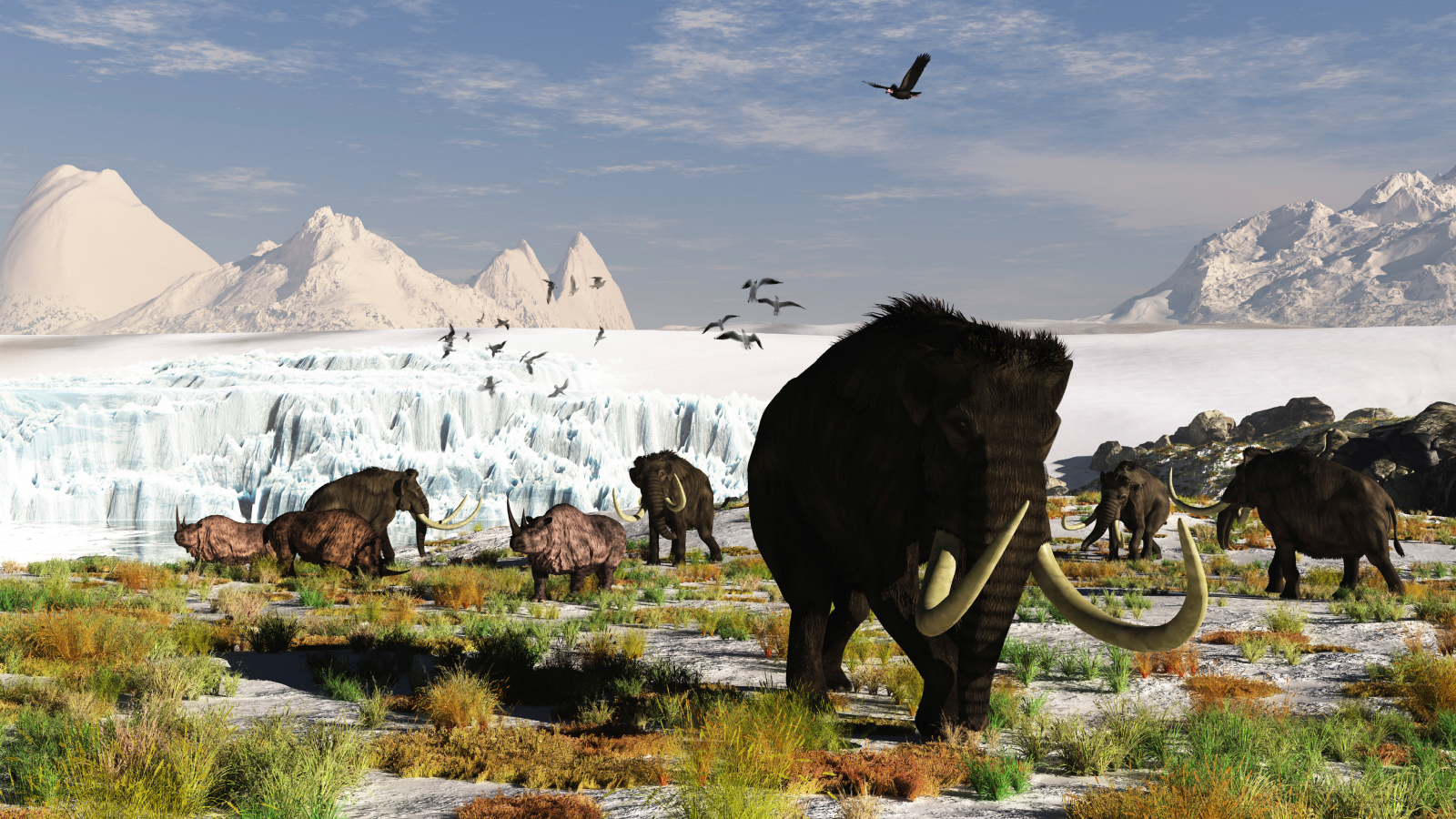Ancient 'land bridge' that connected Siberia to US wasn't what it seems, scientists find
The boggy landscape of the Bering land bridge may have allowed some ice age animals to cross easily, while others stayed in Asia.

The Bering land bridge that spanned between Siberia and Alaska during the Ice Age was more of a Bering land bog, new research finds.
The discovery could help explain why some animals, such as birds, easily crossed the land bridge, while others, like woolly rhinos (Coelodonta antiquitatis), didn't make the migration.
The land bridge, now submerged under the Bering Strait between Alaska and Russia, was above water from about 36,000 years ago to 11,000 years ago. Scientists thought it might have looked a lot like the grassy, arid steppe landscape in Siberia and Alaska at the time — but no one had ever investigated the ocean floor where the "bridge" once stood.
Last year, researchers led by University of Alaska Fairbanks geologist Sarah Fowell set out on the research vessel Sikuliaq to extract cores of sediment from the floor of the Bering Sea. It was the first attempt to reconstruct the ancient landscape and climate of the land bridge.
The researchers presented their results today (Dec. 10) at the annual meeting of the American Geophysical Union (AGU) in Washington, D.C. Instead of a grassy steppe, they found a marshy landscape criss-crossed by rivers and dotted with little lakes.
"We were looking for several large lakes," Fowell said in a statement. "What we actually found was evidence of lots of small lakes and river channels."
Lake sediments were apparent in the ocean floor cores, as were pollen, small fossils, ancient DNA and organic matter. The pollen and fossils revealed that the landscape hosted trees and mosses. The researchers also found egg cases from water fleas (Daphnia), a freshwater crustacean.
Sign up for the Live Science daily newsletter now
Get the world’s most fascinating discoveries delivered straight to your inbox.
This marshy environment may have been particularly welcoming for some species such as birds, but there were also spots where there was evidence of larger mammals making the migration. One site hosted mammoth DNA. Bison are also known to have crossed from Eurasia to North America during the time that the land bridge existed, and horses are known to have made it from North America to Eurasia.
"Even if it was mostly floodplains and ponds, the grazers were around, just uphill following higher, drier areas," Fowell said.
However, the environment may have been less conducive for species that did not make the move between continents, such as the woolly rhino (a Eurasian native), American camel (native to north and central America), and the short-faced bear (native to North America).
"The watery, wet landscape could have been a barrier for some species," Jenna Hill, a geologist with the U.S. Geological Survey who is also presenting research on the Bering Sea core data at the AGU meeting, said in the statement, "or a pathway for species that actually travel by water." Further research will be needed to understand the full impact of the environment on migration.
Mammoth quiz

Stephanie Pappas is a contributing writer for Live Science, covering topics ranging from geoscience to archaeology to the human brain and behavior. She was previously a senior writer for Live Science but is now a freelancer based in Denver, Colorado, and regularly contributes to Scientific American and The Monitor, the monthly magazine of the American Psychological Association. Stephanie received a bachelor's degree in psychology from the University of South Carolina and a graduate certificate in science communication from the University of California, Santa Cruz.









